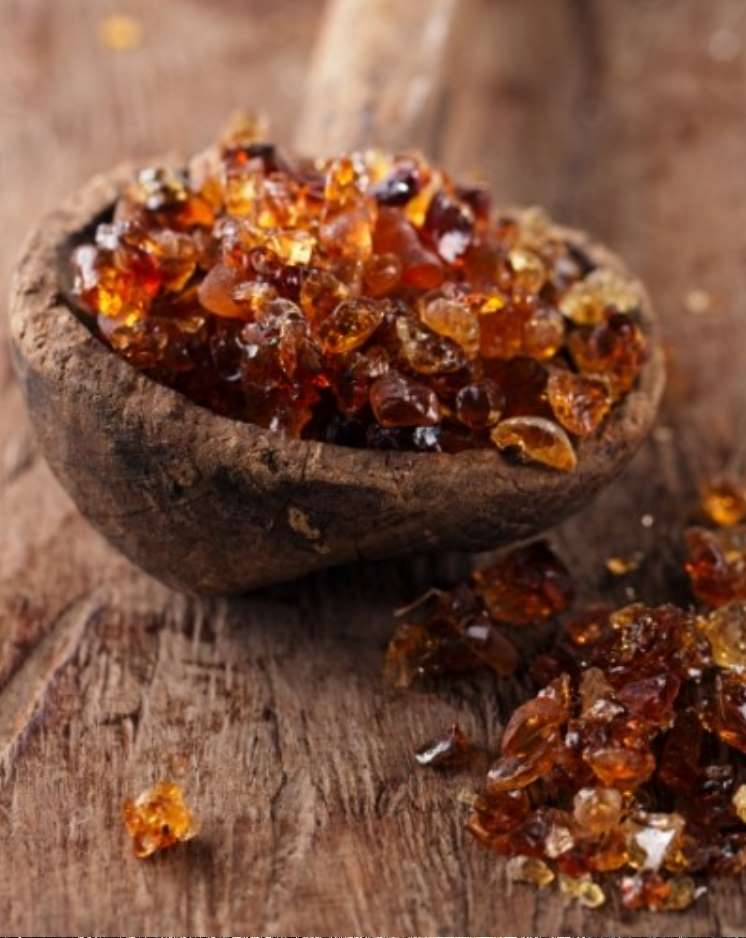Differences Between Acacia Senegal and Acacia Seyal – The Two Sources of Gum Arabic (E414)
Last updated: October 15, 2025 · Reading time: ~5 min

Acacia Senegal and Acacia Seyal are the two principal species producing natural Gum Arabic (E414). While both share a clean-label profile and identical additive designation, their functional behaviour differs in ways that matter for beverage emulsions, confectionery coatings and nutrition powders. This guide compares composition, solubility, viscosity and emulsification so formulators can choose the right grade for each application.
Botanical & Geographical Origin
- Acacia Senegal: prevalent in Sudan, Chad and Nigeria; exudes hard, amber gum pieces.
- Acacia Seyal: distributed across the Sahel “Gum Belt” from East to West Africa; yields lighter, more friable gum.
- Both are harvested by hand tapping; sustainable sourcing supports local communities and land restoration.
Chemical Composition & Functional Differences
| Property | Acacia Senegal | Acacia Seyal |
|---|---|---|
| Arabinogalactan-protein complex | Higher protein fraction; robust interfacial activity | Lower protein fraction; milder interfacial activity |
| Solubility | Fully soluble in cold water | Often benefits from warm water for full dissolution |
| Viscosity (at use levels) | Very low; ideal for clear beverages and light mouthfeel | Medium; beneficial for coatings and binding |
| Emulsification capacity | Excellent oil-in-water emulsifier and flavor fixative | Moderate stabilizer; less suited for high-clarity emulsions |
| Color & Taste | Very light, neutral taste | Slightly darker tone, mild taste note |
Application Guidance
Beverages & Flavor Emulsions
Choose Acacia Senegal when clarity, very low viscosity and long-term emulsion stability are critical (e.g., juice drinks, citrus emulsions, energy & vitamin beverages).
Confectionery, Bakery & Coatings
Choose Acacia Seyal where a bit more viscosity and binding/film-forming behaviour is helpful (e.g., panned candies, glazing, cereal binding).
Nutrition & Fiber
Both species are considered soluble dietary fibers. For fiber enrichment without thickness increase in RTD/powders, Senegal’s lower viscosity is often preferred.
Regulatory & Labeling
In both the EU and the US, the ingredient is labelled under the single additive designation E414 – Gum Arabic. Species names are not required on pack; formulators specify Senegal vs Seyal internally for performance consistency.
Sustainability & Sourcing
Eco Agri supports certified, traceable supply across the Gum Belt, promoting resilient livelihoods and environmental stewardship. Diversifying demand across both species helps reduce resource pressure and stabilise farmer income.
Need guidance on selecting the right Gum Acacia grade?
Our team can advise on emulsification targets, solubility, certifications (Organic, Halal, Kosher) and sensory outcomes.
Formulation Tips
| Use case | Recommended species | Typical use level | Notes |
|---|---|---|---|
| Flavor emulsions / clear beverages | Senegal | 2–8% | Very low viscosity; excellent O/W emulsification |
| Confectionery coatings / glazing | Seyal | 5–20% | More body/film; good binding |
| Fiber enrichment (powders/RTD) | Senegal | 3–10% | Soluble fiber with light mouthfeel |
FAQ – Choosing Between Acacia Senegal and Seyal
Which gum is best for beverages?
Acacia Senegal — very low viscosity and strong emulsification for clear beverages and flavor emulsions.
Can I blend Senegal and Seyal?
Yes. Blends are used to balance stability, film formation and mouthfeel.
Typical dosage ranges?
Beverages/emulsions: 2–10% depending on oil fraction. Coatings/binders: 5–20% in syrups/solutions.
Dissolution & pH considerations?
Senegal dissolves in cold water. Seyal benefits from warm water (~40–50 °C). pH 3–7 is common in food & beverage.
Explore the Gum Acacia Knowledge Hub
Learn more about the functionality, sourcing and regulatory aspects of Gum Acacia (E414) across our in-depth technical articles:
- Differences Between Acacia Senegal and Acacia Seyal — composition, solubility and functional performance.
- Gum Acacia in Beverages – Emulsion Stability Study — formulation ranges, homogenization and QA testing.
- E414 Labeling – EU & FDA Regulations — ingredient naming, E-number usage and fiber claims.
→ Back to the main overview: Gum Acacia (Gum Arabic) – Applications & Specs
